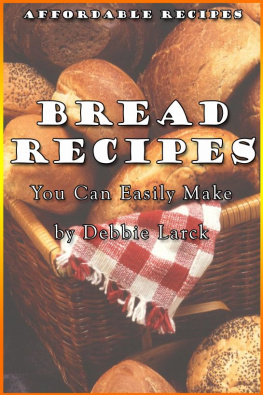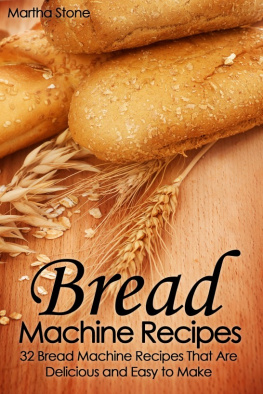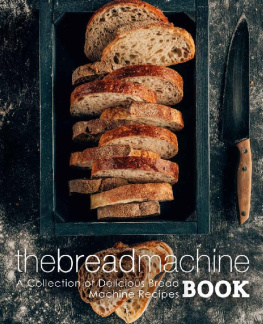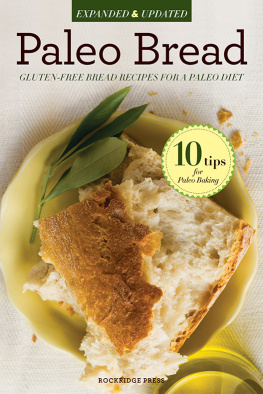Everything Essene Bread
Simple Guide to Essene Bread, (Manna Bread/Sprout Bread) with Recipes
Karen Romani
Copyright 2014 by Karen Romani
All rights reserved. No part of this publication may be reproduced, distributed, or transmitted in any form or by any means, including photocopying, recording, or other electronic or mechanical methods, without the prior written permission of the publisher, except in the case of brief quotations embodied in critical reviews and certain other noncommercial uses permitted by copyright law.
Table of Contents:
An Introduction to Essene Bread
Whole grains are an important and essential part of a healthy diet. A convenient and effective way to begin including more whole grain into your overall diet is by adding a whole grain bread known as Essene Bread into your general diet. Essene Bread is a very good source of whole grain and it also has many other hale and hearty health benefits. If you are not familiar with what Essene bread essentially is, this resource will give you an in-depth introduction to Essene Bread, and a general explanation of why and how this bread can be especially beneficial to your overall health.
What exactly is Essene Bread?
Essene Bread (which has also been referred to as Manna Bread) is a particular type of sprouted bread. In general, this type of bread is one that has been made from natural whole grains that have germinated (a.k.a. sprouted). There are a number of different kinds of sprouted bread and Essene Bread happens to be one of them.
Essene Bread is a specific primordial sprouted (germinated) grain bread type. It is also a type of bread that is most often consumed one of two ways: either completely uncooked or only slightly heated, (warmed up) and cooked at very low temperatures.
The term: Essene itself was historically originated from a Jewish religious faction called The Essenes. These famed Essenes thrived and prospered all throughout the time period of 2nd century B.C. up into the 1st century A.D. This period time is also sometimes referred to as Biblical times.
This historical Jewish group of people is believed to have been the first ever to develop and implement the original method for, as well as the first basic recipe for preparing and consuming Essene Bread. It was made from germinated wheat and heated at a low temperature in order to make certain that the Essene bread itself retained the greatest amount of all of its natural vitamins, minerals and other healthy nutrients.
The germination of the wheat seeds is a most likely one of the most important parts of making Essene Bread due to the fact that the process itself breaks down the particular materials often found in the bread that some people could possibly be either allergic or sensitive to.
These days, the bread that is most abundantly available in stores and even many bakeries is produced on masses and is not made anything even remotely close to the way breads of the ancients were made. The majority of the mass-produced breads of today are primarily made up of mainly white flour that has been both bleached as well as de-mineralized through modern-day processing, plain tap water, (which is neither the purest nor the healthiest type of water) hydrogenated or partially hydrogenated oils, (which are the most unhealthy oils in existence) baking soda and/or yeast, butter and/or lard, (with the highest fat content), and ordinary table salt that most likely has been chemically treated. All of these ingredients that are most often used to produce todays processed breads all have the potential to be damaging and/or harmful to your overall health.
Even the much less harmful and significantly healthier modern-day versions of whole-grain breads that within the past several years, have been re-launched onto the conventional market industry, dont even come close to being on the same level as Essene (Manna) bread. The Ezekiel version of Essene bread is almost exactly the same, only it is made from yeast instead.
These days, germinated (sprouted) breads such as Essene, Manna, and Ezekiel breads, can usually be found in many of todays modern health food stores, and are most often located in the freezers or frozen foods sections of these stores. These breads can be ordered online as well. And even though these sprouted breads are significantly more expensive than the cheaper, processed and mass-produced conventional breads of today, it is mainly because it takes a lot more time, more work, and more expensive (organic) ingredients to produce these breads. The benefits of sprouted (germinated) breads like Essene bread make the more expensive price tag of these particular breads, more than worth it, especially for those of us who tend to be the more health-conscious individuals.
How Is Essene Bread Made?
So how exactly is this infamous Essene bread produced? Well, we have already established that Essene Bread is an excellent source of natural whole grain; however, there are actually a number of other really great benefits that are specifically associated with the consumption of the famed Essene Bread.
The Jewish Essenes were also avid vegetarians and furthermore, they were a people who practiced an ascetic kind of lifestyle. One of the Essenes primary foodstuffs was bread- specifically bread made from germinated whole grains and/or the roots of berries. The Essenes would then finely ground down these ingredients and then add water to the whole mixture, and then, to ensure that the important natural nutrients such as enzymes, vitamins and minerals were all retained in the bread, they would only ever cook the Essene Bread ingredients at lower temperatures for about 10 to 12 hours or so.
In some of these more recent years, Essene Bread has truly gained a significant amount of popularity. Those who are regular eaters of the infamous Essene Bread will sometimes throw in additional ingredients such as raisins, nuts, seeds, and/or dates. Some people will also include a combination of herbs and spices to their Essene Bread recipes, depending on their taste preferences. The inclusion of these extra ingredients can add more flavors the taste of the Essene bread and it does not take away from the overall nutritional value of the bread itself. Actually, depending on what specific extra ingredients are added to the general recipe, the nutritional value of Essene Bread can even be increased. This, in turn, can result in an augmentation of the overall nutritional benefits that Essene Bread already offers to your health in general.
The Benefits of Essene Bread
Essene Bread has a large amount of overall nutritional health benefits. One of the main reasons that this infamous natural whole grain bread is starting to become more and more popular among health-conscious individuals is mostly due to its marginal number of distinct health benefits. The consumption of Essene Bread can be beneficial to your health in numerous and significant ways. Here, you will find some of the best and most noteworthy benefits that Essene bread offers to your general health when you make the decision to add this considerably healthy whole grain bread your normal diet, especially if you consume it on a regular basis.
Naturally-Occurring Plant Enzymes In Essene Bread
Due to the fact that Essene Bread is prepared from germinating (sprouting) natural whole grains such as rye, wheat, buckwheat, and/or spelt, the process used in its preparation has earned this infamous bread the title of the living loaf. All of the enzymes that naturally occur in these whole grains are kept completely in-tact because they remain in a partially raw state after the entire preparation process has been completed.
These naturally-occurring plant enzymes provide digestive benefits to the human body. They help the body properly digest nuts, seeds and fibrous material in the intestines. This results in more nutritional content being extracted during the digestion process. An acid called phytic acid is a substance found in grains that hinders the absorption of nutrients. The germination (sprouting) process actually neutralizes this acid, and keeps it from inhibiting nutrient absorption.
Next page







